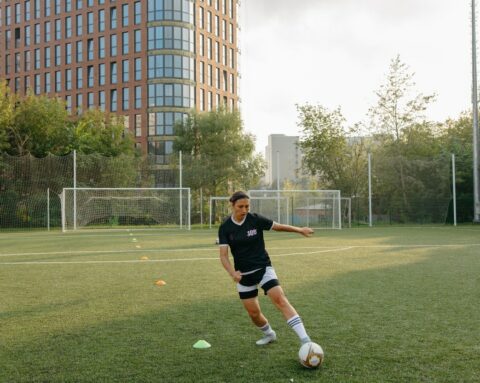Compartment Syndrome
Compartment syndrome is a condition that affects the lower leg. There are many compartments in your lower leg with different nerves, muscles, blood vessels and tendons running through the compartments. There is fascia surrounding your compartment which is crucial to divide the muscle from the nearby tissue and to help improve the efficiency of contractions. Compartment syndrome occurs when the pressures within these compartments are increased to the level where the blood vessels, blood or nerves can become compressed.
Causes:
You may first notice compartment syndrome symptoms following an increase in training or activity, especially if they involve repetitive motions. As you use your muscles there is increased blood flow as well as a build-up of waste products which can cause increased pressure within the muscle compartments. The pressure may increase to such a degree that it takes longer to reduce after exercise. The extra pressure placed on the compartment leads to reduced blood flow and as a result, reduced oxygen in the muscle tissue.
Some people may find that they have an extra compartment found deep in the lower leg that can greatly increase the risk of compartment syndrome. In other cases, compartment syndrome may develop due to the fascia becoming thickens as a result of either surgery or a chronic inflammatory process.
Symptoms:
Some of the major symptoms of Compartment Syndrome include cramping, pain in the lower leg during exercise, tightness, burning or pressure. These symptoms will most commonly occur around your calf or shin area. These symptoms will generally occur at predictable intervals and can lead to unexpected fatigue that happens suddenly at your ankle or a numbing feeling in your big toe. Make sure when you next exercise you are checking for these symptoms and to book a session if required
Diagnosis:
Compartment Syndrome can be very difficult to diagnose as there are many other reasons that you may feel pain in your leg such as Achilles Tendonitis. Compartment Syndrome is usually pinpointed due to its predictable nature occurring at regular intervals during exercise. If you have no pain at rest and the pain comes on after a set duration of time and continues to worsen until you stop exercising it is likely that you are experiencing compartment syndrome.
Your myotherapist can be very helpful in reducing your symptoms of compartment syndrome. Following the advice provided by your myotherapist can help modify your exercise habits to provide less pain. There are some cases, however, usually caused by genetics and anatomy which prevent some people from responding to hands-on myotherapy. In such cases, surgery may be the best option for a full recovery. It is always best to get the advice from a trained myotherapist before looking at options such as surgery.
Treatment:
There are five phases of compartment syndrome treatment that will focus on reducing pain, restoring functionality and preventing reoccurring injury. Stage one of the healing process is centred around reducing pain and swelling as much as possible. In this initial stage, we will ensure that your pain is managed. Techniques such as acupuncture, massage, orthotics and taping have been proven to have strong pain reduction results.
It is quite common to find in compartment syndrome that biomechanics failures are causing increased pressure on your legs. In phase two your myotherapist will ensure that your normal range of movement and posture is restored through joint alignment and mobilisation techniques. In stage three we will be working to restore your strength and muscle control. This stage will mostly be handled through assigning appropriate exercises that allow you to regain your normal muscle control. However, everyone’s body is different and as such your myotherapist will prescribe exercises to suit you specifically.
During phase four you will be able to start returning to your former activities. This stage will be monitored closely by your myotherapist to ensure your recovery has progressed sufficiently to your required level of performance. Finally, phase five is focused on ensuring there is no reoccurrence of the injury. The most effective way to prevent the injury from returning is to address your biomechanics. This will be judged on a case by case basis and your myotherapist will guide you on taking the appropriate steps. If these steps are ineffective surgery may be required in rare cases.
Contact us:
If you believe you may be suffering from compartment syndrome, please book a session today and begin your personalised recovery program!






